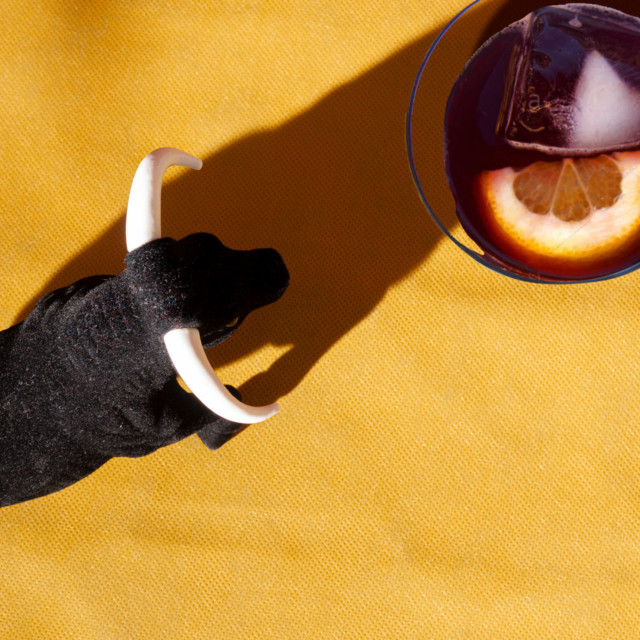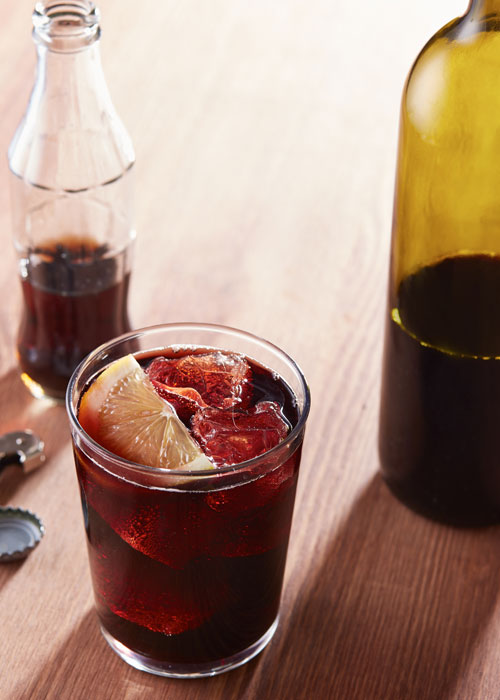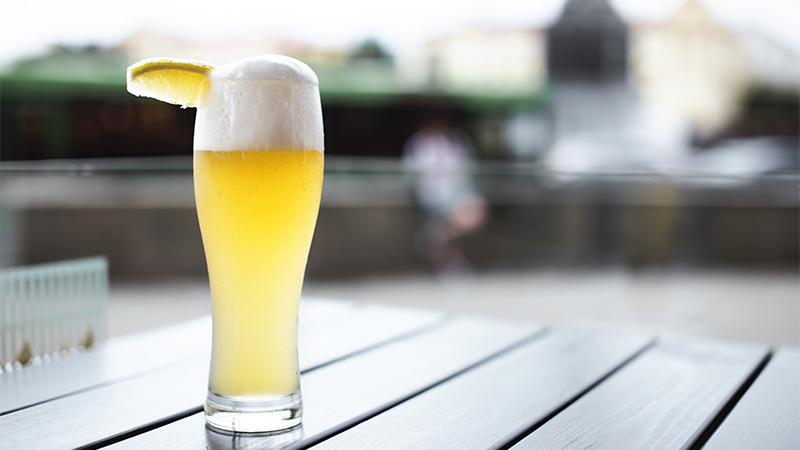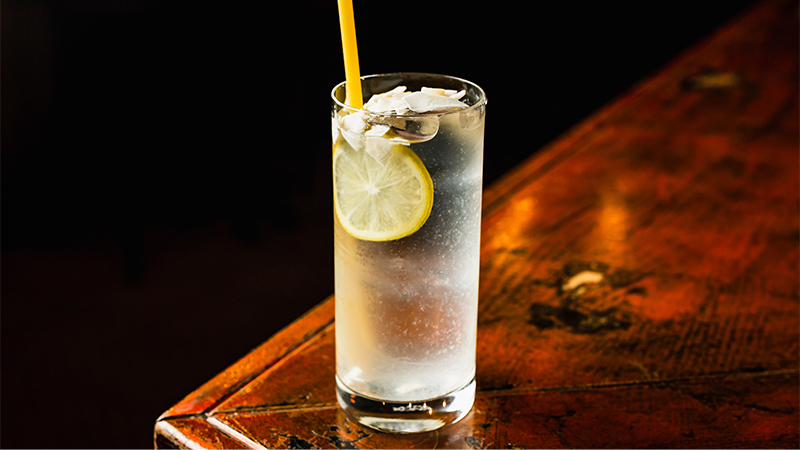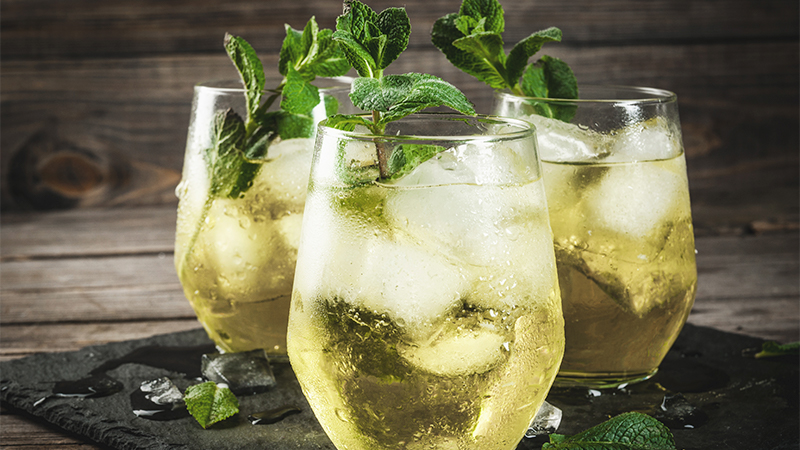“The first time I ordered a Martini in the U.S. I received 4 ounces of vodka,” says Juan Tappi, a Spanish bartender who works at New York’s Socarrat Midtown. “I thought, ‘What the hell is this?’”
Tappi’s confusion stemmed not from the great gin versus vodka debate, but instead highlights a language barrier that can exist between different drinking cultures. Had he ordered a Martini in his hometown of Madrid, Tappi would have almost certainly received a hearty glug of the Italian vermouth — white or red, but always sweet — poured over ice, and topped with soda water. Chances are he’d be drinking it along with a few complimentary snacks, in the company of friends, and as part of a beloved ritual known as “la hora del vermut” or “vermouth hour.”
While some drinks orders may get lost in translation, Spain’s culinary customs have enjoyed something of a “moment” on U.S. soil in recent years. Notable, if purely speculative, among the driving factors: our fascination with the great gastronomic temples El Bulli and El Celler de Can Roca; our (warranted) obsession with celebrity chef José Andrés; and glitzy multi-million-dollar dining establishments, including Andrés’s own 35,000-square-foot “love letter” to his homeland, Mercado Little Spain.
Spain’s trending status all but ensures that American drinkers with their fingers on the pulse are aware of the nation’s vermouth bars and the drink’s place in everyday life. Some might have even embarked on pre-pandemic pilgrimages to sample that culture for themselves, IRL.
Nevertheless, focusing solely on vermouth, and interpreting only literal translations of “la hora del vermut,” misses a host of other refreshing Spanish aperitivos. Low-fuss yet full of flavor and refreshment, these drinks stand as ambassadors for the country’s range of autonomous communities, and their varied traditions and regional delicacies.
Kalimotxo
Beginning in Spain’s north, many will be familiar with the first such creation, perhaps having even noted the contrasting difficulty of spelling the drink versus swigging it.
Born in Getxo, in the Basque Country, Kalimotxo is a humble highball comprising cheap red wine and Coca-Cola. Like many of Spain’s treasured drinks, it has strong ties to a local feria or fiesta, annual periods of festivities that can last from a few days to over a week. The most cited version of this drink’s tale places a large vat of spoiled (or poor quality) wine at the center. Meanwhile, a supposedly ugly individual plays the role of protagonist, saving the day by suggesting the vino for the event be enjoyed with Coca-Cola to hide its own blemishes.
It feels superfluous (if not downright mean) to draw attention to the man’s physical appearance. But “motxo” means “ugly” in the Basque tongue, and the innovator’s distinctive attributes are said to have inspired the combination’s name.
Though spoiled wine is no longer a prerequisite, you won’t find locals reaching for a bottle of their preferred gran reserva Rioja or Priorat when mixing a batch, either. “Not only does the wine not have to be sophisticated, it should not be too complex,” says Miguel Lancha, cocktail director for José Andrés’s ThinkFoodGroup. “That’s the whole point of it.”
Economic approachability only emboldens the appeal of the simple, sweet highball among younger drinking-aged adults. If a small group of friends can stump up 3 euros between them, they’re good for an evening’s festivities.
“As a teenager getting into the world of alcohol, this is your first adult beverage,” says Felix Meana, a Catalunyan native and co-owner of North Carolina’s Cúrate and La Bodega Cúrate. “I have lots of fun memories with a glass of Kalimotxo in my hand.”
Since gaining popularity in the 1970s, Kalimotxo has made waves across the country, and even navigated the Atlantic. While Meana suggests that its “rebellious” and “youthful” connotations are helping Kalimotxo become hip, the drink has traditionally been enjoyed mainly in the northern reaches of Spain, as well as in budget-friendly bars in major cities like Madrid.
Tinto de Verano
More ubiquitously loved is Tinto de Verano, a variation on Kalimotxo that calls for lemon soda rather than Coke. La Casera is the nation’s overwhelming go-to brand for the drink’s non-alcoholic constituent, due to its toned-down sweetness, Lancha says.
With La Casera unavailable stateside, U.S. drinkers seeking authenticity can instead turn to another Spanish brand: PepsiCo’s Kas Limón, which is fairly obtainable online. And in an absolute pinch, there’s always Fanta Lemon.
“The wine has to be from Spain,” Tappi says. “The rest is negotiable.”
Clara
Should you take the plunge and stock up on an 8-pack of Kas Limón from a specialized Spanish retailer, be sure to also pick up a few bottles of cheap beer, such as Mahou. Doing so opens the door for another widely enjoyed national beverage: Clara.
Similar to a Shandy or Radler, Clara mixes two or three parts of lemon soda with a small amount of unexceptional lager. Though ideal for the dog days of summer, particularly in the south where the mercury regularly smashes 100 degrees, Clara remains a staple almost year-round thanks to its genial character and the soda’s canceling effect on beer’s bitterness.
Pomada
Other drinks go even more regionally specific with their ingredients. Apply the same formula as Clara but switch in gin for the beer and you’ll soon be sipping on a Pomada.
Native to the Balearic Islands, this lemony highball — a kind of Tom Collins — calls specifically for Menorcan Gin de Mahón. Online sources conflict on whether Gin de Mahón boasts protected geographical status, but it’s safe to say that the pomace-distilled style is widely believed to have held the distinction at least at some point. In any case, only the Xoriguer distillery, which is based in the Menorcan capital of Mahón, seems to use the labeling term.
Available in a handful of markets stateside, the brand’s slim green bottle features a distinctive ring on its neck (for pouring, presumably) and bright red cap — a kind of Luxardo Maraschino and Tanqueray handle hybrid.
Rebujito
Finally there’s Rebujito, which pushes the boundaries of high-low juxtaposition to their most extreme. Concocted to lubricate the wheels of Andalusia’s Feria de Abril, this highball blends the region’s famous dry sherries (fino or manzanilla) with Sprite. That’s right: In this case, a sugary international soda is absolutely preferred.
“It’s my job to come up with crafted, fresh-ingredient cocktails, and I’ve tried it all,” ThinkFoodGroup’s Lancha says of numerous failed attempts to improve on the pitch-perfect balance delivered by the sweet soda. “The most delicious [version] is with Sprite.”
Gin Tonic
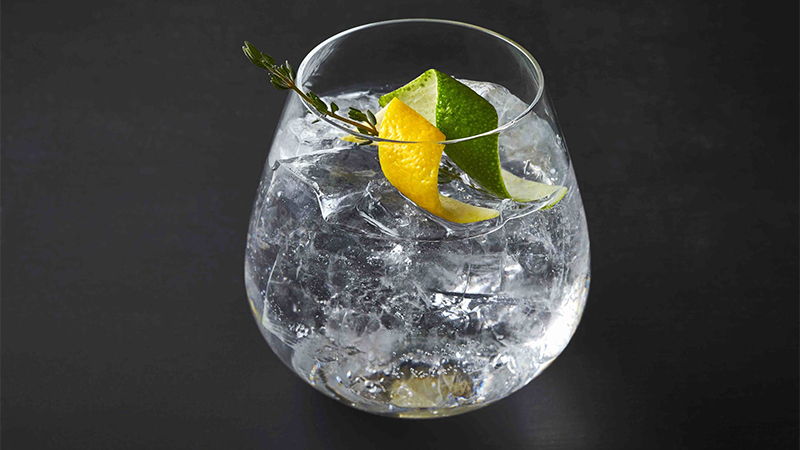
Of course, it would be remiss of us not to touch upon the Gin & Tonic. Though historically British, in the past decade or so Spanish drinkers and bartenders have adopted the bittersweet highball as a long-lost child. Served in signature balloon style glasses to amplify aromatics, Spanish versions arrive with various modifiers and garnishes, and a more measured touch than those guzzled down on the British isles. Such has been the way Spain has taken to the G&T, there’s an argument to be made that it exists more as a category of cocktails there now, rather than one revered drink.
Meana shares his preferred preparation, which involves massaging a thickly cut lemon peel (not a wedge) inside the glass, before adding ice and the liquid ingredients, then expressing the garnish over the drink before serving. Describing the Spanish-style “Gin Tonic” as a more delicate version of the cocktail, he says: “For me, it is the perfect drink because it serves as the perfect aperitivo before you start; you can sip it while you are enjoying a meal or afterwards as a digestif.”
If all of these cocktails seem custom designed to beat the heat, their shared low alcohol content is also not coincidental. In some respects, the latter characteristic is even more desirable. Regardless of temperature, each can be sipped and shared for extended periods to maintain that most pleasant level of inebriation American’s might call buzzed. There’s even a specific Spanish phrase for it: “Coger el puntillo,” or “agafar el puntet,” in Catalan. (Roughly translated: reach the point.)
“Spaniards always try to find a way to drink more, and earlier, without getting wasted,” Tappi says.
They might just be onto something.
